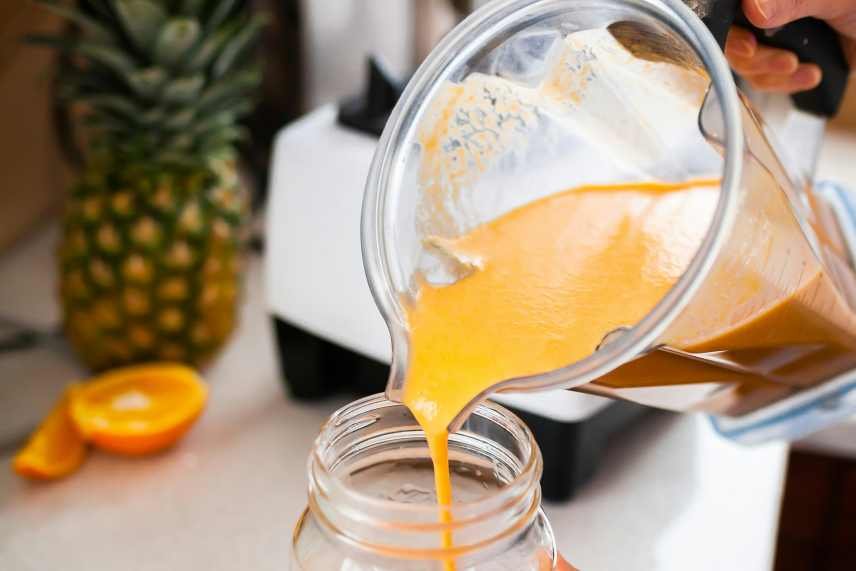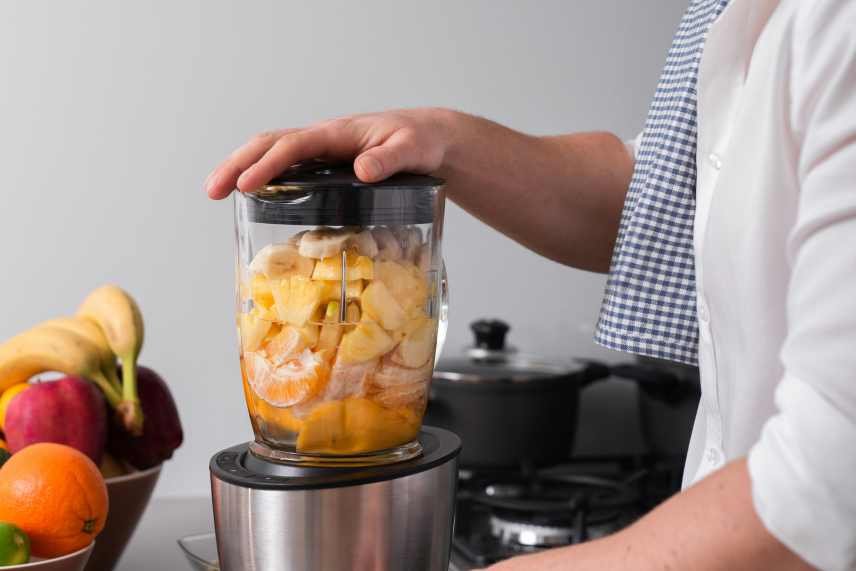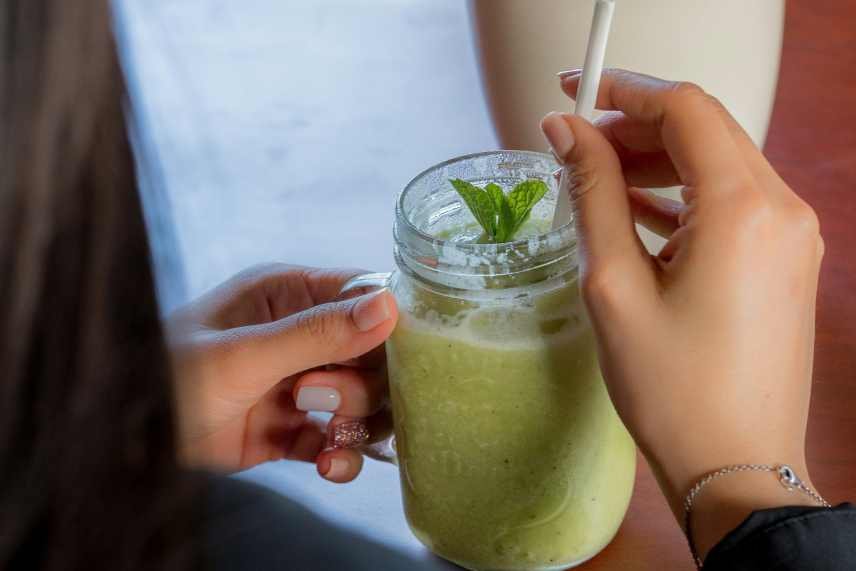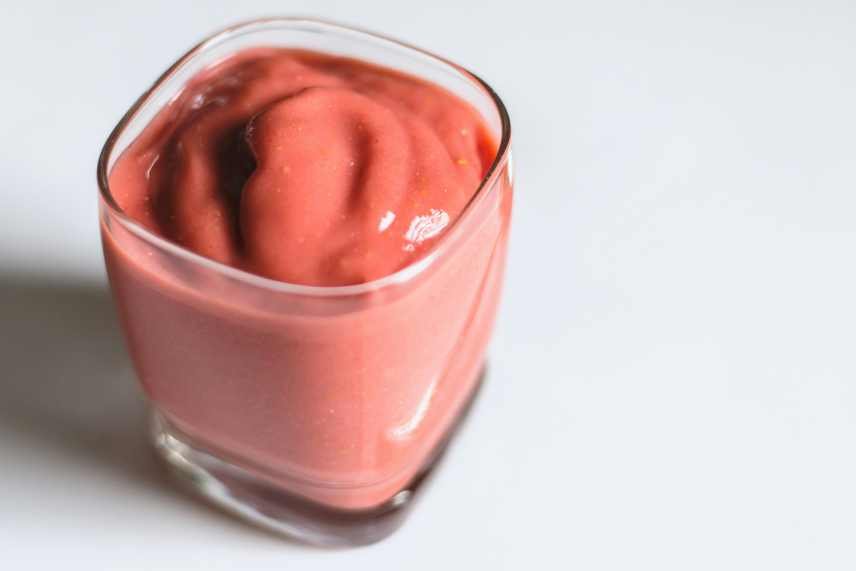Learn the secret to boosting flavanols in your smoothies by bypassing bananas and employing strategic ingredient combinations and food preparation techniques.
Overview of Boosting Flavanols in Smoothies
Flavanols, a subgroup within the vast polyphenol family, are celebrated for their antioxidant capabilities, bolstering heart health, and providing many other health benefits. These compounds, however, are influenced by the ingredients they are paired with in smoothies, especially because of enzymes like polyphenol oxidase (PPO) in certain fruits like bananas..
This article delves into how the interaction of specific ingredients can either hinder or enhance the bioavailability of these beneficial flavanols, offering insights into preparing nutritionally optimized smoothies.
Understanding the interplay between flavanols and other compounds is crucial, especially in the context of smoothies—a popular medium for consuming a concentrated dose of fruits and vegetables.
Researchers emphasize the significance of selecting the right mix of ingredients to ensure that the health-promoting potential of flavanols is not compromised by enzymatic activities that could otherwise reduce their absorption.
Importance of Flavanols in a Healthy Diet
The role of flavanols in a balanced diet cannot be overstated. Research links these compounds to improved cardiovascular health thanks to their antioxidant and anti-inflammatory properties. Beyond their heart health benefits, flavanols are also believed to possess neuroprotective effects, offering a protective shield against cognitive decline and diseases like Alzheimer’s.
Therefore, incorporating flavanol-rich foods into one’s diet is more than a trend—it’s a proactive step toward enhancing one’s overall health and well-being. The choice of ingredients in flavanol-containing smoothies is not just a matter of taste but of nutritional strategy, aiming to maximize the absorption and efficacy of these powerful compounds.
Impact of Banana on Flavanol Levels
While bananas are a staple in smoothies for their creamy texture and sweet taste, their ability to spoil flavanol absorption (due to high PPO activity) is a drawback. Research has demonstrated that when bananas are blended with berries—a category of fruits rich in flavanols—the resulting smoothie sees a marked decrease in flavanol levels.
This reduction is attributed to the PPO released by bananas, which interacts with the flavanols, rendering them less bioavailable.
This finding underscores the importance of being mindful about combining ingredients with differing enzymatic activities. One can enjoy the full spectrum of health benefits these compounds offer by opting for fruits that do not compromise the integrity of flavanols.

Optimal Ingredient Combinations for Maximizing Flavanol Absorption
In light of the impact that certain fruits can have on flavanol levels, it becomes imperative to choose smoothie ingredients wisely. Javier Ottaviani’s research illuminates the pathway to achieving this, suggesting a blend of flavanol-rich fruits like berries with those exhibiting low PPO activity, such as pineapple, oranges, mango, or yogurt.
This strategic pairing not only preserves the flavanol content in smoothies but also enhances their absorption, ensuring that the body reaps the maximum health benefits. Avoiding high PPO activity fruits like bananas in smoothie recipes is a significant step towards maintaining optimal flavanol levels for absorption.
Enhancing Nutritional Benefits Through Ingredient Selection
By incorporating a variety of flavanol-rich fruits, such as blueberries, strawberries, and raspberries, smoothies can significantly boost their antioxidant content. Complementing these fruits with low PPO activity ingredients like yogurt and almond milk can further optimize the smoothie’s nutritional profile.
Additionally, the inclusion of leafy greens like spinach or kale not only augments the smoothie with essential vitamins and minerals but also enhances its flavanol-absorption potential, making for a beverage that is both delicious and nutritionally superior.
Food Preparation Techniques for Maximizing Flavanol Absorption
The method of preparing smoothies also plays a crucial role in preserving flavanol content. Techniques that minimize the exposure of flavanols to PPO enzymes are recommended, such as proper blending and possibly freezing fruits beforehand to reduce PPO activity.
Moreover, experimenting with the addition of citrus juices can offer a dual benefit of flavor enhancement and PPO inhibition, further optimizing flavanol absorption.
Conclusion and Recommendations
For you to make the most out of the health advantages of smoothies, especially when it comes to absorbing flavanols, it’s important to pay attention to the ingredients you combine and how those ingredients interact enzymatically.
By incorporating a diverse array of fruits, vegetables, and low PPO activity ingredients, one can craft a smoothie that is not only nutritious and delicious but also optimized for flavanol absorption.
Exploring various recipes and methods of preparation can give you the power to customize your smoothies according to your nutritional requirements, guaranteeing a rich infusion of flavanols in each delicious sip.
Related Article:
Beyond Bananas: Delicious Smoothie Recipes That Don’t Include Them

Smoothies are a fantastic way to pack essential nutrients into your diet while enjoying a refreshing and satisfying treat. However, if you’re not a fan of bananas or looking to switch up your smoothie game, fear not!
There are plenty of delicious alternatives to create creamy and flavorful concoctions without relying on this popular fruit. In this blog post, we’ll explore two mouthwatering smoothie recipes that are banana-free but still bursting with flavor and nutrition.
Continue reading: Delicious Smoothie Recipes That Don’t Include Bananas
What Fruits Should Not Be Mixed in Smoothies: A Guide for Smoothie Newbies

In this article we explore the nitty-gritty of what fruits should not be mixed in smoothies to help you avoid common pitfalls and craft the perfect smoothie every time.
Discover the ultimate guide on what fruits should not be mixed in smoothies. Dive into the do’s and don’ts to create the perfect blend for your health and taste buds!
Continue reading: What Fruits Should Not Be Mixed in Smoothies
Unlocking the Magic of Magnesium: Your Smoothie’s Super Ingredient for Weight Loss and Glowing Skin

By integrating magnesium-rich foods into your smoothies and considering supplements when needed, you’re setting the stage for a healthier, more vibrant you. Whether it’s boosting your weight loss journey, improving your skin health, or simply ensuring your body runs like a well-oiled machine, magnesium might just be the secret ingredient you’ve been searching for.
Continue reading: Your Smoothie’s Super Ingredient for Weight Loss and Glowing Skin
Recent Posts
Vegan Meal Replacement Smoothie Recipes for Quick and Nutritious Fuel
Vegan meal replacement smoothies offer a convenient way to pack essential nutrients into a quick and delicious beverage. These recipes allow individuals to enjoy a balanced, healthy meal while...
Carrot Smoothies for Weight Loss: A Delicious Way to Shed Pounds
Carrot smoothies for weight loss have gained popularity as an effective choice for busy women looking to lose weight. Packed with vitamins, minerals, and fiber, carrots provide essential nutrients...


